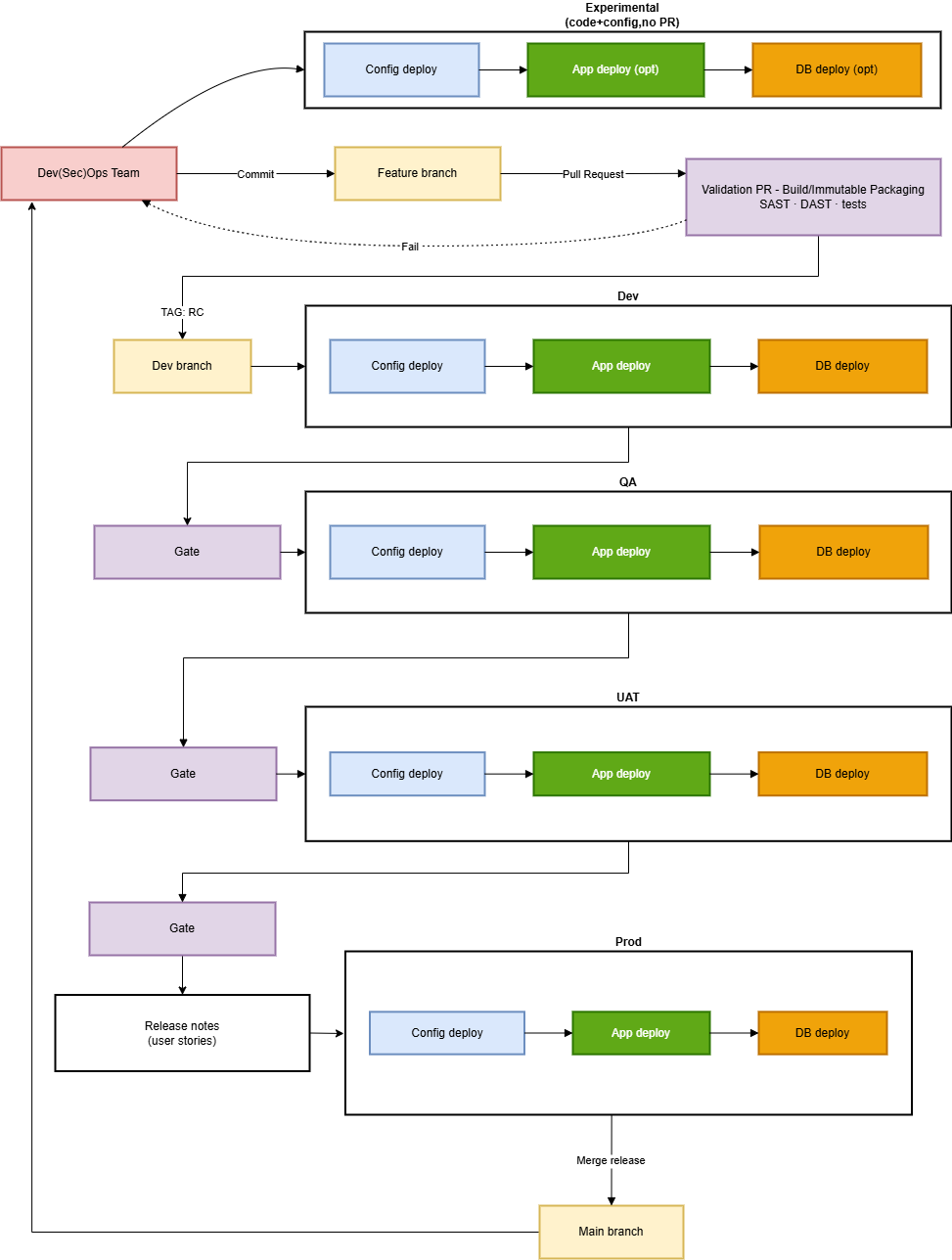So what’s the big deal about DevSecOps?
Why can’t you just explain it?
I can, but first we need to talk about DevOps.
Act I – DevOps, the culture. Not a person.
Contrary to many job ads, DevOps isn’t a title. It’s a way of working that dissolves the wall between those who build software and those who run it. Think of it as a kit of good habits:
- Shared ownership: Dev and Ops solve problems together.
- Automation: Let the pipeline handle repeatable work so humans focus on value.
- Continuous feedback: Ship small, ship fast, break less.
- Process before product: Tools only matter if they fit the people and the flow.
Teams that embrace this cultural shift ship faster and with fewer outages: something the DORA State of DevOps reports have measured for years.[1]
Rule of thumb
Do the right thing at the right time.
Simple to say, tricky to master.
Act II – Adding the SEC
All we do is extend the same mindset: if Ops belongs in the conversation from day one, so does Security. DevSecOps weaves security controls, tests and governance into every stage of the pipeline instead of treating them like an end-of-cycle audit.[2]
Act III – A walk through the pipeline
(Click the picture to enlarge.)
| Stage | Why it exists | Who it shields |
|---|---|---|
| Experiment | Fail fast on a branch or local sandbox. | Literally everyone else. |
| Dev | Prove the change plays well with codebase, config & IaC. | Fellow engineers, OPS. |
| QA | Automated & exploratory tests, data seeding, basic gates. | Testers and early adopters. |
| UAT | Mirror prod as closely as budgets allow; performance & business acceptance. | Business stakeholders. |
| Prod | Final gate, release notes, infra diffs. | Real customers & revenue. |
Security questions ride along:
- Experiment → Dev – Static analysis, secret scanning.
- Dev → QA – Dependency checks, container image signing.
- QA → UAT – Dynamic (DAST) tests, infra-drift detection.
- UAT → Prod – Compliance artefacts, runtime policy enforcement, configuration concerns.
We didn’t add environments: we baked security into the ones we already have.
Act IV – The big DevSecOps change.
Ready for the twist?
We change … nothing.
Stages, people and cadence stay the same. What changes is the definition of done. Security requirements become first-class citizens—groomed, coded, tested and deployed beside features. It feels almost boring, which is exactly the point: security becomes routine, not roulette.
Conclusion – Why this matters, now!
- High-performing teams that couple culture, automation and security outperform their peers on stability and speed.[1]
- Regulators and customers expect proof of software supply-chain hygiene, continuously.
- Talent retention improves when Ops & Security aren’t firefighting at 2 a.m.
Your call to action
- Invite security to the daily stand-up. Today. Zero slide decks required.
- Automate one pain-point.
- Add one security gate: Owasp, SAST, SCA or container scan, before the next sprint review.
- Share this article with a teammate and ask what “doing the right thing at the right time” means to them.
DevSecOps isn’t a new religion; it’s DevOps done right. Start small, iterate, and let security become as invisible, and indispensable as, version control.
Ready to drop that wall for good? Let’s ship, safely. Questions let's have it below.
References
- Google Cloud / DORA – State of DevOps Reports
- Red Hat – What is DevSecOps?
- AWS – DevSecOps Explained
© 2025 JPSoftWorks. All rights reserved.





No comments:
Post a Comment